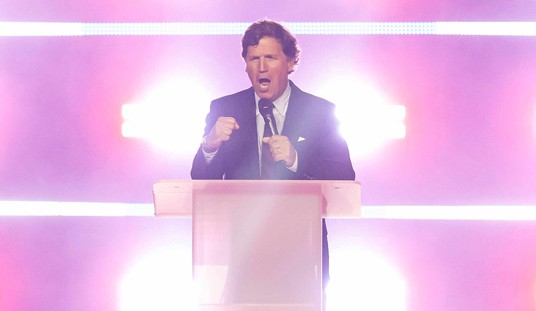Can President Obama declare the debt ceiling unconstitutional? Felix Salmon at Reuters considers the possibility. “Back in late May, Tim Geithner literally brandished the Constitution of the United States while declaring — quite rightly — that it is unconstitutional to question US debt payments. A few commentators, Bruce Bartlett among them, reckon that this sets up a possible highly-dramatic endgame to the debt-ceiling negotiations: ‘The president would have constitutional authority to take extraordinary measures to protect the public credit and prevent a debt default even if it means disregarding the debt limit, which is statutory law subordinate to the Constitution.'”
The Christian Science Monitor’s Peter Grier looks at the same issue. “The debt limit standoff is getting more serious by the day. … So here’s a solution some Democrats and a few conservatives are floating – President Obama should just ignore this whole debate and order Secretary of the Treasury Timothy Geithner to keep those debt payments flowing.”
Peter Morici suggests a less drastic solution: print money and sell bonds to soak up what is printed. “The Treasury has the power print money to pay its bills. That would create the danger of too much money in the hands of the public and, thus, inflation, but the Federal Reserve has options to neutralize this problem. The Fed holds on its balance sheet about $2.6 trillion in securities, mostly Treasury bonds. As the Treasury prints money to pay its bills, the Fed could sell bonds to the public to keep the amount of money in circulation from rising.”
How? Remember that the money supply is currency the public holds in its wallets and deposited in checkbooks — but the statutory debt limit applies to Treasury bonds held by the public and the Fed.
At $1.6 trillion a year, the process of the Treasury paying its bills by printing money and the Fed selling off bonds to absorb the excess cash in circulation could keep the government running past the next election. …
The Treasury would have to print about $1.2 trillion a year in new money, and the Fed would sell an equal amount of securities from its balance sheet; that maneuver would take us until a new Congress is seated and a reelected President Obama or his successor has a clear mandate.
But such a fix would need someone to lead it. The debt crisis takes place in the context of what Stacey Kaper and Catherine Hollander described as a paralysis in the financial leadership of the administration. “It is well known that Austan Goolsbee, the chairman of the President’s Council of Economic Advisers, is on his way out; Jared Bernstein, Vice President Joe Biden’s top economic adviser, has already left; and Jeffrey Goldstein, the Treasury’s undersecretary for domestic finance, also has announced his exit.”
There is also the shortage of two governors on the Federal Reserve Board and the lack of permanent heads in place at the Office of the Comptroller of the Currency, Federal Housing Finance Agency, Consumer Financial Protection Bureau, and Federal Housing Administration. Federal Deposit Insurance Corp. Vice Chairman Marty Gruenberg has been named to succeed Sheila Bair as FDIC chief, but his Senate confirmation process has not begun.
In the meantime, the administration is only able to focus fully on one issue at a time, and it is taking its toll on other financial policy matters. …
“Everything is falling way behind schedule and I don’t see them picking it up; people are leaving rather than coming,” said Dean Baker, a co-director of the Center for Economic and Policy Research. “It’s a really big problem in the sense that nothing is getting done. The issues don’t go away. It just means that they fester or others take the lead.”…
“It would be amazing that you are at the one-year anniversary of Dodd-Frank and, if the headlines about Geithner are true, the last man standing from the financial crisis is Ben Bernanke,” said Ed Mills, a financial policy analyst with FBR Capital Markets, referring to the Federal Reserve Board chairman, who is a holdover from the Bush administration. “I don’t think anyone would have every imagined that at a point in our history … that you would have so few permanent people in place.”
One alternative is to keep making it up as it goes along, which is pretty much what has been happening anyway, as the Kaper and Hollander article suggests.
But William Black, an outspoken critic of the government’s handling of the financial crisis and an associate economics and law professor at the University of Missouri, Kansas City, argued that with the economy in such a weak state, there is little incentive for Geithner to stick around to bear the blame for it. He added that Obama can get by like he has been doing by appointing an acting leader.
“The economy is obviously in very poor shape, the recovery is obviously weak, the budgetary deals that they are talking about are insane … That means Geithner is going to be a liability on the job side,” said Black. “The president can use an acting leader and he can always bring former Fed Chairman Paul Volcker in. And then say we are adopting with my new guy, or new gal, this new initiative, and we are going to spend a lot of time on job training and infrastructure, which is what he always says,” he said sarcastically.
Is it the end of the world as we know it? The crisis has going on from before the mid-term elections, which were predicted to be and were, a catastrophe for the President. But as Adam Smith once put it, “there’s a lot of ruin in a nation”. Seawater may be rising in the holds, but in First Class section drinks are still being served.
“No Way In” print and Kindle edition at Amazon
Tip Jar or Subscribe for $5










Join the conversation as a VIP Member